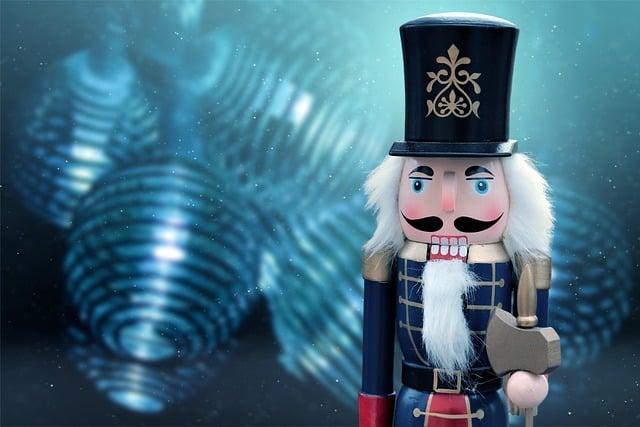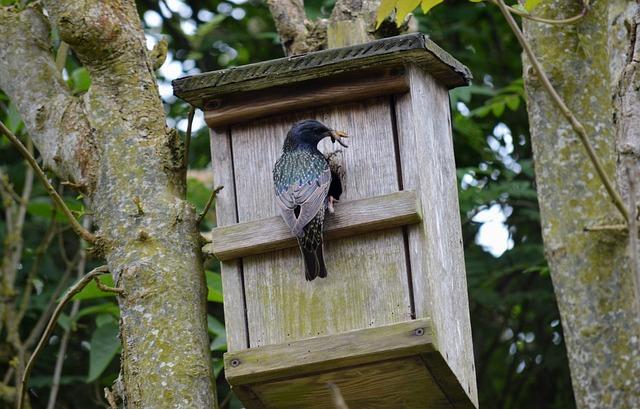Once upon a time, in a small village blanketed by snow, the townsfolk gathered each December to celebrate the spirit of Christmas. They adorned their homes with twinkling lights, vibrant ornaments, and fragrant evergreen boughs. This tradition began centuries ago when a kind-hearted villager, inspired by the beauty of winter, decided to bring warmth and joy to the cold nights. As families hung their decorations, laughter filled the air, and the village transformed into a magical wonderland, reminding everyone of hope, love, and togetherness.
Table of Contents
- The Historical Roots of Christmas Decorations
- Symbolism and Meaning Behind Common Decor
- Innovative Trends in Modern Christmas Ornamentation
- Sustainable Practices for Eco-Friendly Holiday Decor
- Q&A

The Historical Roots of Christmas Decorations
The origins of Christmas decorations can be traced back to ancient traditions that celebrated the winter solstice. Early civilizations, such as the Romans and the Celts, adorned their homes with greenery to symbolize life amidst the cold, dark winter months. **Evergreens**, including holly, ivy, and mistletoe, were particularly favored for their resilience and vibrant colors. These plants were believed to ward off evil spirits and bring good fortune, setting the stage for the festive spirit that would later be associated with Christmas. As Christianity spread, these pagan customs were gradually incorporated into the celebration of the birth of Christ, transforming the way people decorated their homes during the holiday season.
By the Middle Ages, the practice of decorating for Christmas had evolved significantly. **Nativity scenes** began to emerge, depicting the birth of Jesus and serving as a reminder of the holiday’s religious significance. The introduction of the Christmas tree in Germany during the 16th century marked a pivotal moment in decoration history. Families would adorn their trees with **candles**, **fruits**, and **handmade ornaments**, creating a warm and inviting atmosphere. As the tradition spread across Europe and eventually to America, the decorations became more elaborate, incorporating a variety of materials and styles. Today, the legacy of these historical practices continues to influence how we celebrate, with decorations ranging from the traditional to the modern, each reflecting the rich tapestry of cultural influences that have shaped the holiday.

Symbolism and Meaning Behind Common Decor
Christmas decorations are rich in symbolism, each element carefully chosen to convey deeper meanings that resonate with the spirit of the season. For instance, **evergreen trees** represent eternal life, a reminder of hope and renewal even in the coldest months. The **star** atop the tree symbolizes the Star of Bethlehem, guiding the way to the birthplace of Jesus, while **ornaments** often reflect personal stories and cherished memories, adding a layer of nostalgia to the festive atmosphere. The use of **lights** signifies the light of Christ coming into the world, illuminating the darkness and bringing joy to all who celebrate.
Additionally, the colors used in Christmas decor carry their own significance. **Red** embodies love and sacrifice, echoing the blood of Christ, while **green** symbolizes rebirth and the promise of new life. **Gold** represents divinity and royalty, reminding us of the gifts brought by the Magi. The tradition of hanging **stockings** by the fireplace is rooted in the spirit of giving, symbolizing the hope of receiving blessings and gifts. Each decorative choice we make during this season not only enhances our surroundings but also connects us to the rich tapestry of traditions and meanings that have evolved over centuries.

Innovative Trends in Modern Christmas Ornamentation
As the holiday season approaches, the world of Christmas ornamentation continues to evolve, embracing both tradition and innovation. One of the most exciting trends is the use of **sustainable materials**, where artisans are crafting ornaments from recycled items, natural elements, and biodegradable substances. This not only reduces waste but also adds a unique touch to each decoration, making them one-of-a-kind. Additionally, **handmade ornaments** are gaining popularity, with families opting to create their own decorations, fostering a sense of togetherness and creativity. These personalized touches often reflect individual stories and memories, transforming the tree into a canvas of cherished moments.
Another captivating trend is the integration of **technology** into Christmas decor. Smart ornaments that sync with home automation systems allow for customizable lighting and sound, creating a dynamic holiday experience. Furthermore, augmented reality (AR) ornaments are emerging, enabling users to interact with their decorations through mobile devices, bringing a new layer of engagement to the festive atmosphere. The rise of **themed decorations** is also noteworthy, with many households choosing specific color palettes or motifs, such as minimalist Scandinavian designs or vibrant retro styles, to create a cohesive and visually stunning display. These innovative approaches not only enhance the aesthetic appeal of Christmas but also invite new traditions into the celebration.

Sustainable Practices for Eco-Friendly Holiday Decor
Embracing eco-friendly holiday decor not only enhances the festive spirit but also contributes to the well-being of our planet. One of the simplest ways to achieve this is by opting for **natural materials**. Consider using items like pinecones, dried fruits, and branches to create stunning centerpieces or garlands. These elements not only add a rustic charm but also decompose naturally, reducing waste. Additionally, **upcycling** old decorations can breathe new life into your holiday setup. Transforming last year’s ornaments or repurposing glass jars into candle holders can create a unique and personal touch to your decor.
Another sustainable approach is to choose **energy-efficient lighting**. LED lights consume significantly less energy than traditional bulbs and can last much longer, making them a smart choice for illuminating your home. Furthermore, consider incorporating **potted plants** or a living Christmas tree into your decor. These options not only beautify your space but can also be enjoyed long after the holiday season ends. By focusing on these sustainable practices, you can create a festive atmosphere that honors both tradition and the environment.
Q&A
-
What is the origin of Christmas decorations?
The tradition of Christmas decorations dates back to ancient times, with roots in pagan winter solstice celebrations. The use of evergreen plants, such as holly and ivy, symbolized eternal life and was later adopted by Christians to represent the everlasting nature of God’s love.
-
Why do we use Christmas trees?
The Christmas tree tradition is believed to have originated in Germany in the 16th century. It symbolizes the Tree of Life and the promise of new beginnings. The practice spread across Europe and eventually to the rest of the world, becoming a central element of Christmas celebrations.
-
What do different Christmas decorations symbolize?
Various decorations carry specific meanings:
- Stars: Represent the Star of Bethlehem that guided the Wise Men.
- Angels: Symbolize the announcement of Jesus’ birth.
- Lights: Reflect the light of Christ coming into the world.
-
How have Christmas decorations evolved over time?
Christmas decorations have evolved from simple natural elements to elaborate displays. In the 19th century, glass ornaments and electric lights became popular, leading to the vibrant and diverse decorations we see today, including themed colors and styles that reflect personal tastes.
As we wrap up our exploration of Christmas decorations, it’s clear that these cherished traditions weave together history, culture, and creativity. Whether simple or extravagant, each ornament tells a story, inviting us to celebrate the season’s magic anew.




